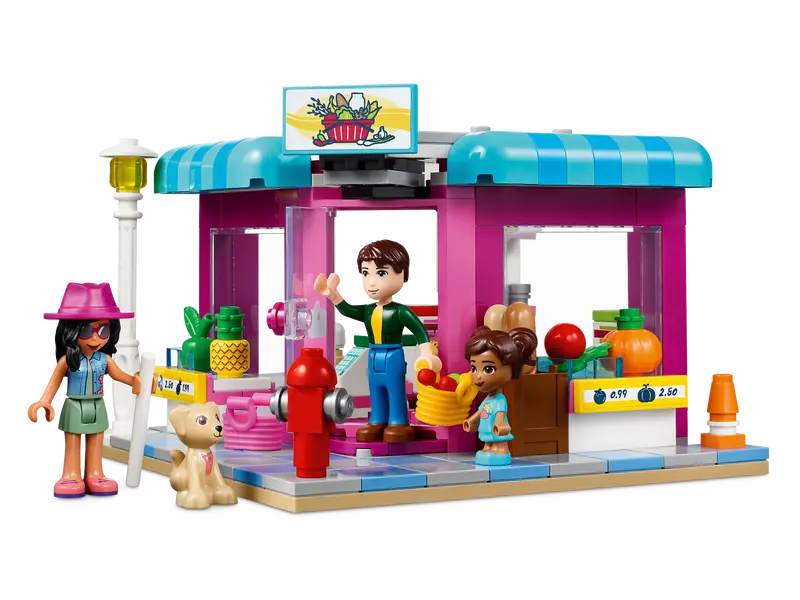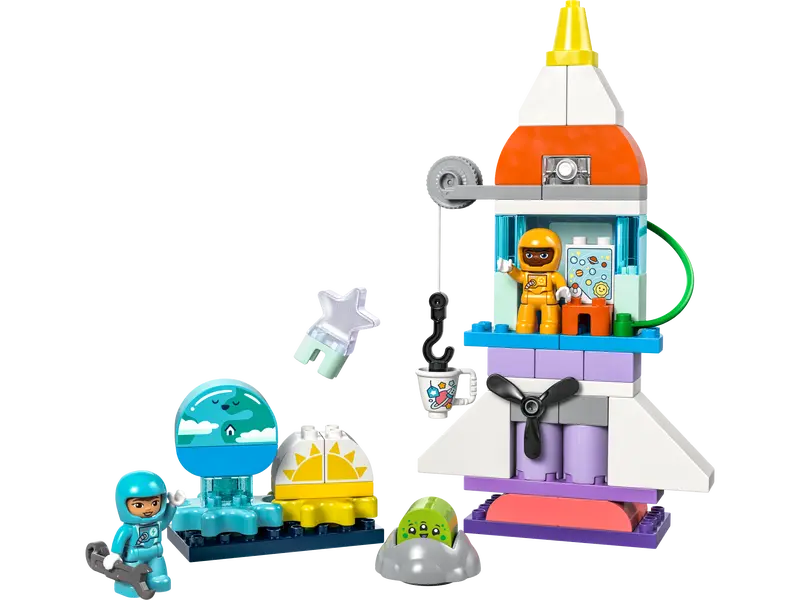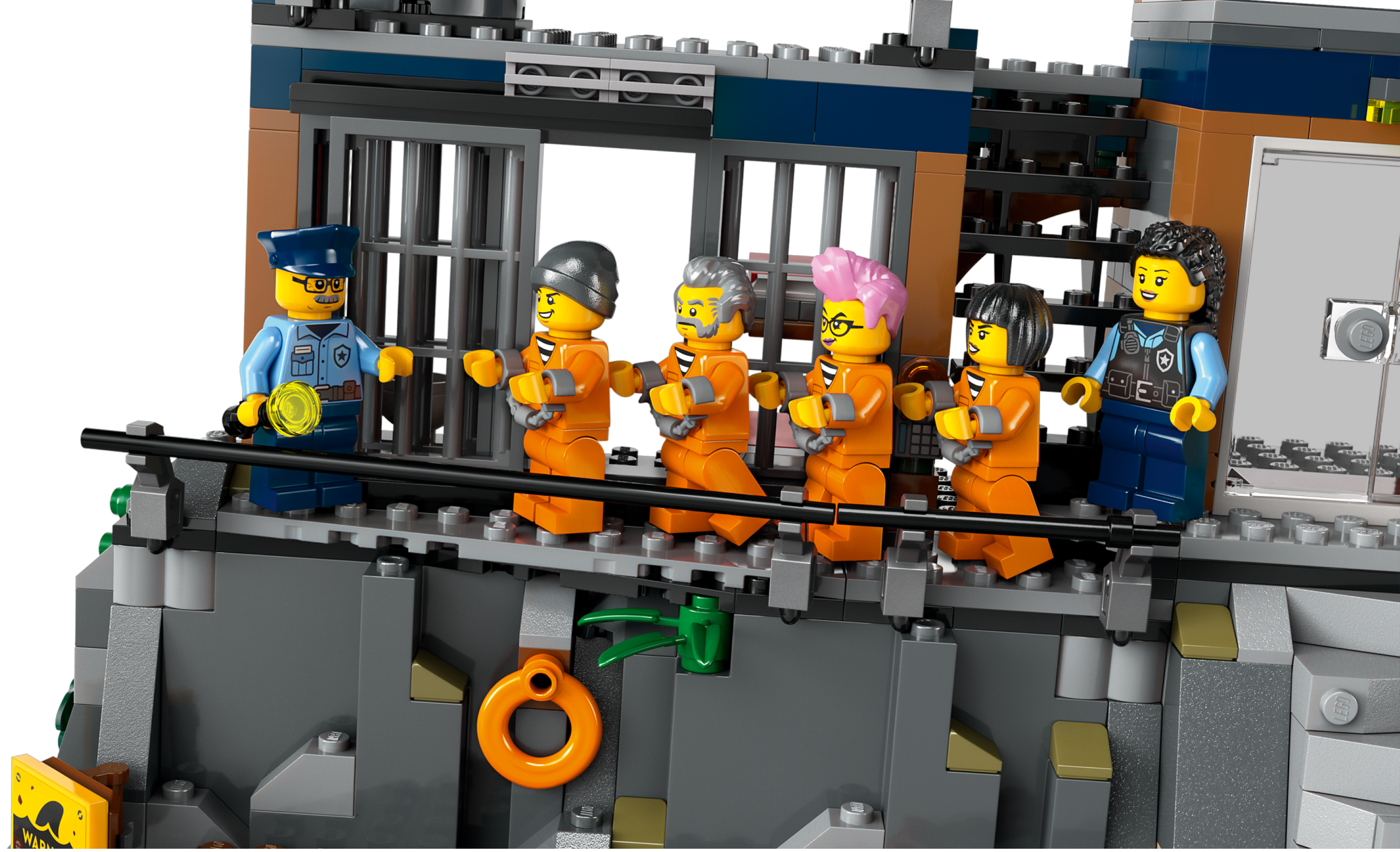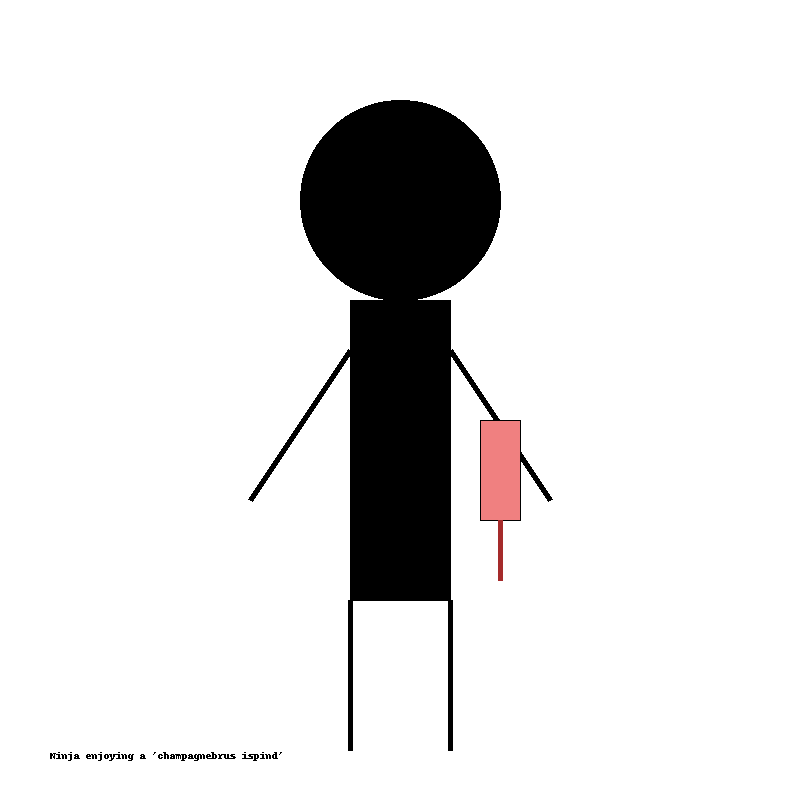Some Lego sets (70 from my count) contain a price list of some kind, indicating how much Lego currency a minifig can expect to pay for an item.
Let's call this Lego currency "Legu" for convenience, faintly referring to the ecu (Wikipedia), the pre-cursor of the euro. In the Lego games, the currency is called "Studs", but the bills and coins in actual Lego sets do not resemble these Lego game studs, so we'll invent "Legu" for the purposes of this article.
I've identified all in-universe pricing in Lego sets from 1949 to June 2024 and made the full list of in-universe prices available on Kaggle, the data science platform.
What can we learn from these prices?
We will discover that:
- Lego themes interact with each other through trade
- The Duplo theme dominates the agricultural sector
- Hidden poverty is rampant in the City theme
- Most City residents sleep in a prison cell or hospital ward
- The Castle theme is a Mad Max-like dystopia
- Talent shows are all-important in the Friends theme
- Ice lollies are everything to ninjas
- Non-perishables only arrive with new sets

Lego themes interact with each other through trade
Prices of items that are sold (with price list) in multiple Lego themes:
| Item | Price | Theme |
|---|---|---|
| Apple | 5.00 | Elves |
| Apple | 3.00 | Castle |
| Apple | 3.00 | Friends |
| Apple | 2.00 | Duplo |
| Apple | 1.99 | Juniors |
| Carrots | 3.00 | Friends |
| Carrots | 1.99 | Juniors |
| Croissant | 7.00 | Friends |
| Croissant | 1.00 | City |
| Croissant | 1.00 | Elves |
| Cupcake | 2.00 | Elves |
| Cupcake | 1.00 | Friends |
| Ice cream (one scoop) | 10.00 | Ninjago |
| Ice cream (one scoop) | 2.00 | Friends |
| Ice cream (three scoops) | 20.00 | Ninjago |
| Ice cream (three scoops) | 3.00 | Friends |
| Ice lolly (green) | 3.00 | City |
| Ice lolly (green) | 1.00 | Friends |
There's too much variance within a very small set of items to definitively determine the most expensive themes to live in, but if we take this list of items that have prices in multiple themes, and we make the available data more meaningful by excluding themes that only have a price for one item (Fabuland, Disney, Creator) and by excluding the uncommon non-food items, and we rank the themes by whether they're more expensive or less expensive than other themes for the same item, we end up with this ranking:
- Ninjago (most expensive)
- Castle
- City
- Elves
- Juniors
- Friends (least expensive)
If we now compare that to the number of agricultural production sets (livestock farming, poultry farming, fruit & vegetable production) in each theme, we get:
| Theme | Cost ranking | Number of "farms" |
|---|---|---|
| Ninjago | 1.00 | 0 |
| Elves | 1.33 | 0 |
| City | 1.50 | 5 |
| Friends | 1.71 | 4 |
| Castle | 2.00 | 0 |
| Duplo | 3.00 | 26 |
| Juniors | 3.00 | 0 |
Why are food prices low in the Elves and Juniors sets despite having no agricultural production?
The Elves have more than meets the eye. They grow pumpkins, they grow candycanes, their magical trees grow bizarre fruits we humans don't even have names for, and they have magic. The Elves will not grow hungry. What they don't have is regular apples, for which they're willing to pay a high premium.
The Juniors theme is a different story. They are a mess. They have pirates, dinosaurs, Spiderman, all sorts of wacky characters. All of them eat regular food, but there is no food production. Instead, the Juniors theme has a close relation to the Duplo theme, in that both are targeted at younger children. That means bigger blocks. But most importantly, it means anarchic creativity. Take a look at set 10422 3-in-1 Space Shuttle Adventure.

The space shuttle has a winch and a propeller on the outside. It is not skyworthy. But, like the Warhammer 40k Orks (StackExchange), there is a cheerful playful belief that things will work regardless and — for Duplo figures and Orks alike — that looks to be true.
Meanwhile in Juniors, you have 10676 Knights' Castle (Brickset), where a catapult is brought to a castle siege despite the castle having an open gate that cannot be closed, and you have 10764 City Central Airport (Brickset), featuring a jet without a pressurised cabin. Duplo and Juniors are aligned, friendly, and thus trade comes easy.
The Duplo theme dominates the agricultural sector
The Duplo theme has many, many farms. Much of that production goes towards their own massive world, including the many zoos, but some of it goes towards Juniors. Duplo and Juniors are united against other themes in preserving their psychic gestalt of bringing imagination to life, as opposed to the more straight-faced and dangerous themes (especially Ninjago, with its relentlessly training ninjas and many barely contained threats), so Duplo limits trade with themes like Ninjago, City, and Castle as much as possible.
This necessarily gives Duplo huge power over those themes that are dependent on food imports.
A different way of looking at the Lego themes
But is this how it works?
So far we've considered each theme as comprising a collection of a single instance of each set in its theme. However, in the wild, Lego sets usually appear in people's homes, in all sorts of configurations. There might be only 1 or several sets from a theme, and sets from other themes, or there might be bricks from multiple themes all mixed together and forming new creations.
That means a price sign showing a croissant costing 1 Legu might be placed in a space bakery with no grain-supplying planet to be seen anywhere. If The Lego Movie (2014) is canon, then the Lego world is a manifestation of the imagination of whoever plays with the Lego. Anything could be real. The amount of agricultural production is irrelevant, trade agreements are irrelevant, inflation is irrelevant, prices are just numbers.
That would mean these in-universe price lists I've collected are irrelevant. A child (or adult!) can decide whether someone needs to pay 1 Legu for a bouquet of flowers, or 1,000,000 Legu, or whether they can pay with a hug, or can trade for a live crocodile, or whether no-one has to pay for anything.
In that case it would still be interesting to think about where the prices come from. In the Platonic ideal of the Lego sets as designed and placed in various Lego themes, why are the prices what they are?
So, let's think about what else must or could be true in the Lego universe as designed.
Hidden poverty is rampant in the City theme
City sets have no panhandling, no dilapidated buildings, no vacant storefronts. There are no obvious signs of poverty. However, City has rampant crime. There are 2 prisons, 3 prisoner transports, 4 police stations, 5 mobile police labs, and... 3 houses.

There are also 4 hospitals, suggesting high levels of serious and/or chronic illnesses. There are also no schools at all, except for — notably — the Police Training Academy. There is low education and low chance of advancement in the City theme, with the vast majority of residents working jobs that — judging by the human world — have low pay.
All signs point towards a world where poverty is a huge problem, but enormous amounts of public funds are put towards suppressing the symptoms instead of improving the minifigs' circumstances.
Most City residents sleep in a prison cell or hospital ward
As of June 2024, there are a total of 547 City residents. There are 3 houses. That clearly cannot fit, or it would get extremely uncomfortable. So where do the other residents sleep, once they're done with their jobs and crimes? The only sleeping arrangements available for them are prisons and hospital wards. Surely they can't all live in prisons and hospitals, since there are so many roadworkers, mechanics, binmen, etc. doing work all across the Lego world? Well, the enormous fleet of police vehicles and ambulances suggests a reality where City residents are brought to their jobs in the morning and returned to prison and — for as far as they're ambulant — the hospital in the evening.
It's a sad reality. Of course, if The Lego Movie is correct, the minifigs only need to sleep when a child (or adult) is playing with them and decides that they need to sleep. If no-one is playing with them, they do not sleep where they are, they simply are lifeless. Therefore, no sleeping arrangements are needed.
The Castle theme is a Mad Max-like dystopia
Food is extremely scarce in the Castle theme due to low agricultural production. Powerful food hoarders vigorously defend their castles against constant attacks by famished groups. The market village, with a small amount of food available, requires armed guards. Where the Duplo and Friends themes are the safest, the Castle theme appears to portray class inequality in its most extreme form, a fever dream of unending violence between the haves and have-nots.
Talent shows are all-important in the Friends theme
Why do the Friends characters seem so intensely dedicated to music (Andrea) or sports (Stephanie) or art (Emma)? The answer is talent shows:
| Item | Price | Category | Set | Theme | Subtheme | Year |
|---|---|---|---|---|---|---|
| Baking show prize | 100,000.00 | Prize | 41393 | Friends | Baking | 2020 |
| Talent show prize | 100,000.00 | Prize | 41368 | Friends | Music | 2019 |
That's 100,000 Legu. What can you buy in the Friends theme for 100,000 Legu?
You can buy:
- 33,333 pizzas with tomato, cheese, olives, and extra mozzarella
- 25,000 flower bouquets
- 20,000 vintage handbags
- 10,000 jet ski rides
- 2,000 sunglasses
That's more than 90 years of having pizza every single day.
Now the obsessive pursuits of Lego mini-dolls make more sense.
Ice lollies are everything to ninjas
For that half of the 198 items that were easiest to compare to real-life equivalents, I've compared the in-universe prices to the prices in Billund, Denmark (or, when not available, in nearby towns or in Copenhagen), based on their local supermarkets, the local sushi shop, the local pizzeria, and so on.
Example: an avocado costs 8.17 krone (DKK) in Billund, and 5 Legu (LGU) in HeartLake City.
Let's first look at the top 5 items which are cheapest in the Lego world, relative to the real world:
| Item | Category | Theme | Price (Legu) | Price (DKK) | % of real price |
|---|---|---|---|---|---|
| Flowers | Home & Garden | Castle | 2.00 | 200.00 | 1.00% |
| Flowers | Home & Garden | Friends | 4.00 | 200.00 | 2.00% |
| Yacht ride | Recreation | Friends | 15.00 | 750.00 | 2.00% |
| Bicycle | Recreation | Friends | 100.00 | 4,079.00 | 2.45% |
| Chips (en-US: fries) | Food | Friends | 1.00 | 40.00 | 2.50% |
Flowers are dirt cheap. Friends has loads of them available, but Castle does not. Perhaps it was a one-time sale in the Medieval Market Village, due to the danger of having anything worth having outside of an actual castle. Boats and bicycles are also very common in the Friends theme. Chips are a bit more puzzling. The potatoes likely come from the farms, but potatoes are rarely seen in Lego sets. So far, from analysing every food item that has ever occurred in any Lego set up to 2015 so far, I know that potatoes have appeared twice, both times in 2002 on a plate that also features cauliflower and peas.
Now let's look at the top 5 items which are most expensive in the Lego world, realtive to the real world:
| Item | Category | Theme | Price (Legu) | Price (DKK) | % of real price |
|---|---|---|---|---|---|
| Ice lolly (red with chocolate dip) | Food | Ninjago | 10.00 | 3.00 | 333.89% |
| Ice lolly (orange or purple) | Food | Ninjago | 7.00 | 3.00 | 233.72% |
| Carrot | Food | Friends | 2.00 | 1.00 | 200.00% |
| Apple | Food | Elves | 5.00 | 2.75 | 181.82% |
| Ferris wheel ticket | Recreation | Creator Expert | 100.00 | 60.00 | 166.67% |
We've already talked about apples in the Elves theme. They can't grow them themselves and import them from Duplo at a premium. The price of carrots in Friends is an odd outlier. Carrots are in fact produced in the Friends theme itself, there's no reason they should be this expensive. It's possible that they're just incredibly delicious to Friends mini-dolls and that production can't be increased to meet demand since that would require a new farm set to be introduced to the theme. Another possibility is that carrots have become part of a speculative frenzy akin to the Dutch tulip mania (Wikipedia) of the 1630s.
Next we have the ferris wheel. Either it's a rare joy the Lego minifigs are happy to pay a premium for, or there's a taxation on fun (unlikely in a Lego world), or Creator Expert has higher prices overall. Let's check that.
Prices in the Creator Expert theme:
| Item | Price | Category | Set | Subtheme | Year |
|---|---|---|---|---|---|
| Sushi (hosomaki) | 3.00 | Food | 31131 | 5 In 1 | 2022 |
| Sushi (onigiri) | 6.00 | Food | 31131 | 4 In 1 | 2022 |
| Noodles with egg, onion, and leek | 8.00 | Food | 31131 | 3 In 1 | 2022 |
| One ferris wheel ticket | 100.00 | Recreation | 10247 | Fairground Collection | 2014 |
| Two ferris wheel tickets | 200.00 | Recreation | 10247 | Fairground Collection | 2014 |
To compare this to other themes, sushi also appears in Friends and Ninjago. The prices are slightly cheaper than in Ninjago, and slightly more expensive than in Friends. Creator Expert does not appear to be unusually expensive.
Now let's compare the ferris wheel ticket price to other attraction prices across the Lego world.
| Item | Price | Theme |
|---|---|---|
| Jet ski (rent) | 8.00 | City |
| Jet ski ride | 10.00 | Friends |
| Movie ticket | 50.00 | Advanced Models |
| Ferris wheel ride | 100.00 | Creator expert |
| Rollercoaster ride | 30.00 | Friends |
| Speedboat (rent) | 6.00 | City |
| Surfboard (rent) | 4.00 | City |
| Ticket (amusement park) | 5.00 | Fabuland |
| Yacht ride | 15.00 | Friends |
For the price of a ferris wheel ride in Creator Expert costs you could go on a rollercoaster 3 times in Friends, or have 10 jet ski rides.
It's a nice ferris wheel, to be fair, and tall! According to Lego, the ferris wheel is 60 cm tall, whereas a minifig is 4 cm tall. That means it's as high as 15 minifigs stacked on top of each other.
For comparison, the classic ferris wheel in Tivoli, Copenhagen is 18.7 m high and the average height of a Dane (male or female) is 1.74 m. That means the ferris wheel is as tall as ten and three quarter Danes (the people, not the dog) stacked on top of each other. What an image.
So the Lego ferris wheel is relatively higher. Perhaps the ferris wheel is just worth the price. It's also possible that it's just convenient to charge 100 Legu, since 100 Legu bills are the only Lego bills and the coins of 10, 20, 30, 40 Legu were discontinued, but not many items are actually charged at 100 Legu. The only ones are:
| Item | Price | Theme |
|---|---|---|
| Bike | 100.00 | Friends |
| Camera | 100.00 | Friends |
| Christmas tree (small) | 100.00 | Advanced Models |
| One ferris wheel ticket | 100.00 | Creator Expert |
In the case of the Friends theme, the sets show that mini-dolls can actually pay by phone through contactless payment, so bills aren't that relevant for them.
Now let's get back to the ice lollies. These are, relatively, the most expensive. We can see that's the case in the Ninjago theme, but what about themes that are not dependent on food imports?
| Item | Price | Theme |
|---|---|---|
| Ice lolly (blue) | 2.00 | Friends |
| Ice lolly (champagnebrus or pink) | 2.00 | Friends |
| Ice lolly (champagnebrus, lime with chocolate dip) | 2.00 | Friends |
| Ice lolly (champagnebrus, lime with chocolate dip) | 1.00 | Friends |
| Ice lolly (green) | 3.00 | City |
| Ice lolly (green) | 1.00 | Friends |
| Ice lolly (pink) | 3.00 | Friends |
| Ice lolly (pink) | 2.00 | Friends |
With an average price of exactly 2 Legu, that means with a typical Danish price of 3 krone, it seems like ice lollies are sought-after in the Lego world, but absolutely life-affirming in the Ninjago theme. Ninjas love ice lollies, who knew?

Non-perishables only arrive with new sets
There are farms, but no factories. Where do the cameras (100 Legu) come from? What about the nail polish (12 Legu)? Or the hairspray (3 Legu)? There is only one possible explanation. Perishable items have to be produced, but non-perishables arrive in the Lego world with new Lego sets. The items that are introduced are the only ones the Lego residents will have at their disposal. You can imagine how delighted the existing residents are when new items arrive.
The problem is that this also means that new characters can arrive that are identical to existing characters. For example, Friends sets have a cast of characters which appear in many sets. This would be less of a problem in a child's way of playing, where either the clones get thrown aside or the clones become twins or friends that simply look alike. But in the Lego world's platonic ideal it wouldn't make sense.
Conclusion
It looks, more and more, like The Lego Movie is indeed the reality of how the Lego world works. Price lists are created to roughly reflect real life, enough to engage the imagination, nothing more.
What matters is not that a Danish champagnebrus ice lolly costs 1 or 2 Legu depending on whether you're at a water park or a funfair, what matters is what crazy shenanigans happen at the water park or funfair.
This entire exercise of categorising and analysing price lists was a President Business activity. The full dataset is publicly available on Kaggle, but this President Business is going to build something with his nearest tiny human.